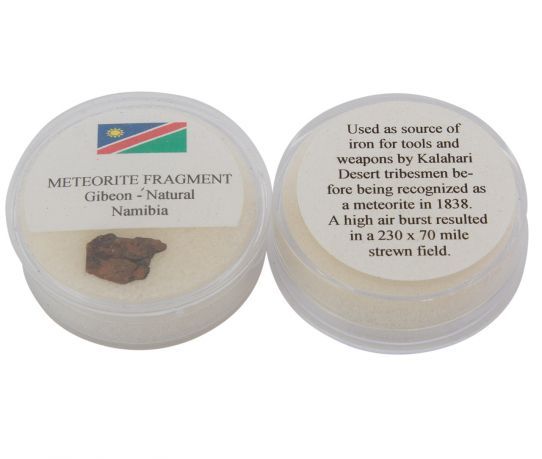We use cookies to make your experience better.
Meteorite Gibeon from Namibia (probably the most famous meteorite in the world)
A meteorite is the part of a meteoroid impinges after it on the earth from space to have fallen through the atmosphere. During the trip through the atmosphere, the material is greatly slowed and very hot; this can be seen as a meteor. Essentially, a meteorite debris from space. On the basis of the composition of meteorites can sometimes be determined what the source is. For example, there are already more than twenty were found which are derived from the moon. This refers to material that another meteorite from the moon's out of control. There are also meteorites, such as ALH84001 found whose origin is Mars. In many cases, however, the meteorite came from the asteroid belt (also called asteroid belt) between Mars and Jupiter. Whether there meteorites consist of a cometary origin, is still under discussion. It is possible that some rare and very fragile species of carbonaceous meteorites of short-period comets originate. A lot of debris that comes in contact with the atmosphere does not reach the earth, but burns by the resistance of the atmosphere. The fragments that burn in the night visible as meteors, also called star rain or shooting star. For larger items that do not completely burn only partially as meteorites land on Earth, occurs when passing the atmosphere a bolide (fireball). That it can be an impressive phenomenon is apparent in the car of the Sikhote-Alin. That was very visible in full daylight. The fireball caused by the Dutch Glanerbrug meteorite from April 1990, just before sunset was visible.
Gibeon (Nama: Khaxa-tsus) is a village in Gibeon Constituency in the Hardap region of Namibia. In 2009 there were presidential elections, 3669 people voted in the Gibeon constituency. The site normally receives an average annual average of 148 millimeters (5.8 inches), although in the 2010/2011 rainy season, 494 millimeters (19.4 in) were measured.
meteorieten in Gibeon












